Shell Museum, Dias Complex

Beez Neez now Chy Whella
Big Bear and Pepe Millard
Fri 10 Jan 2020 23:27
|
The Shell Museum and
Aquaria
 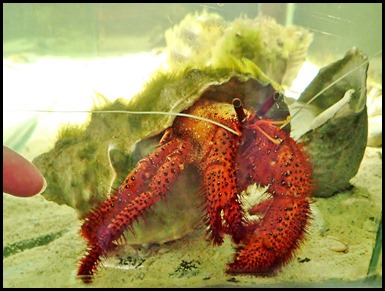 We left the entrance in The Grannery
with it’s temporary display of Blue Print to isishweshwe material to bimble
across to the Shell Museum. This structure was erected in 1902 next to the Post
Office Tree as an extension of The Old Mill. The solid wooden pillars render a
special atmosphere to this edifice. The museum houses imaginative shell
exhibitions and portrays, for instance, the history of the use of molluscs by
man. Live animals are displayed in the natural habitat in aquaria. In through
the door we found an open tank with lobsters looking
up at us. The next tank held a giant hermit
crab.
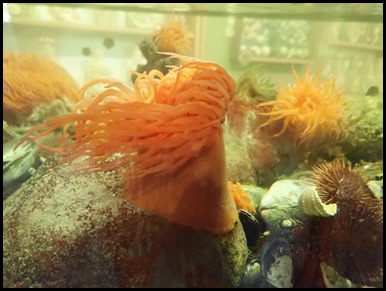  The tanks were beautifully clean. A
long one full of anemones and a cold water tank with
interesting chaps.
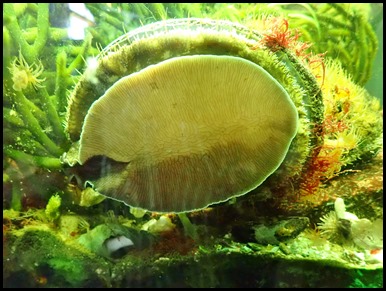  On we went to see abalone (Perlemoen – Haliotis midae) and giant turban (Alikreukel – Turbo sarmatieus).
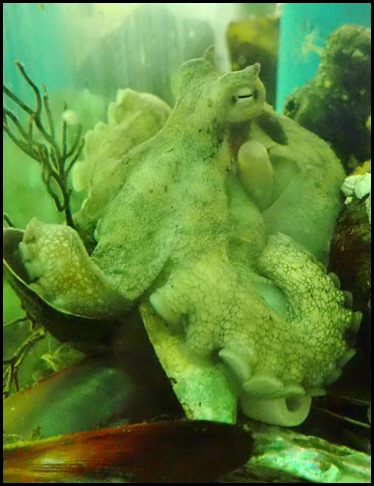 This octopus was a snooty
surprise.
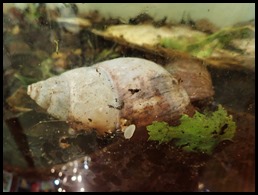   Indigenous giant African land snails and apple snails (fresh water).
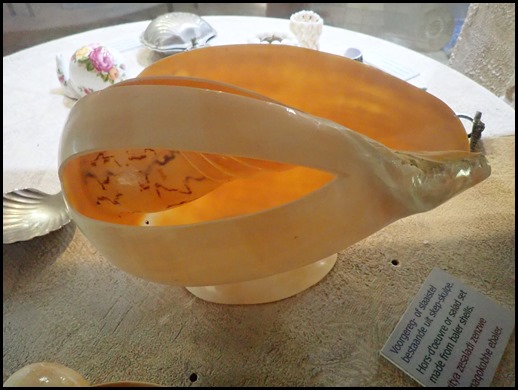 A huge and beautiful hors-d’oeuvre or salad set made from baler
shells.
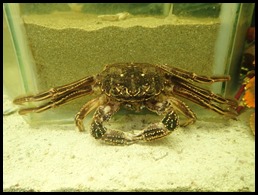 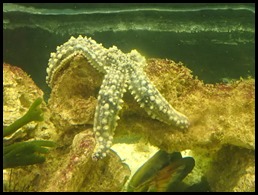  Crab,
starfish and an interesting looking
chap......
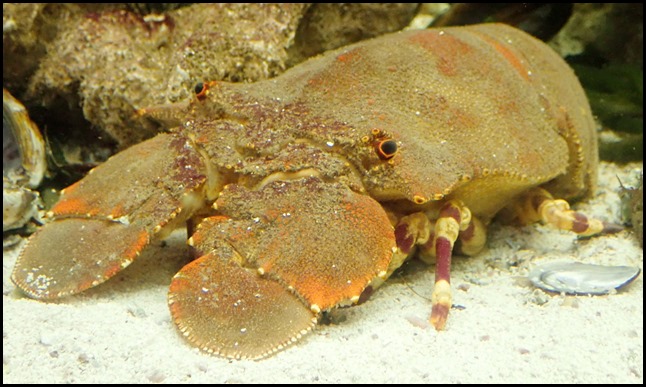 .......a shoveler
lobster, new one on us.
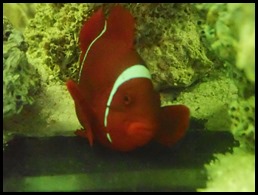 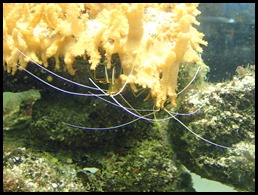 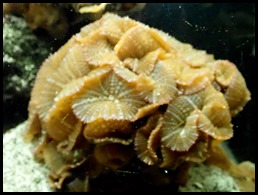 Nemo’s cousin,
cleaner shrimp and brain coral.
 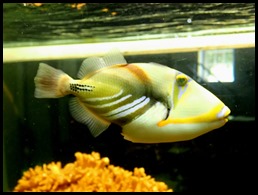 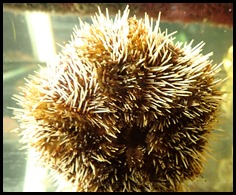 Tree coral,
a picasso and an anemone.
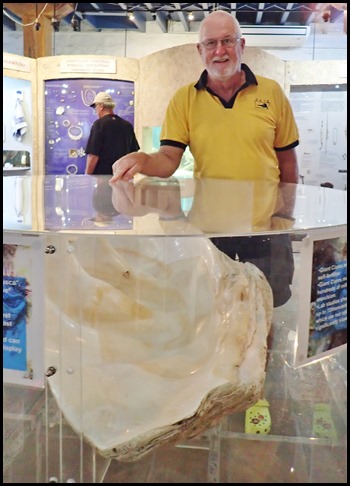 Bear
beside a giant clam. The Giant Clam (Tridacna gigas). Many giant
clams are classified as vulnerable according to the IUCN red data list. Several
aquaculture projects have aimed at increasing the numbers of giant clams. These
date back from 1985 to more recent and ambitious projects from 2007 – 2012.
Giant clams are particularly susceptible to the effects of environmental
pollutants and associated with the poisoning of humans who eat the flesh of the
clam. Strict harvesting quotas have been set.
Distribution: These are warm tropical in shallow
reefs in the Indo & South Pacific Oceans, usually in sand or on broken coral
fragments not more than 20 m below sea level. Major population declines are as a
result of overharvesting and
red tides resulting in their original distribution being significantly reduced
and becoming locally extinct in many areas where they formerly
occurred.
Ecology: Giant
clams are filter feeders, this serves to purify and clean the water, to an
extent. Coral reefs and their waters are generally nutrient poor – giant clams
have adapted to this by forming a symbiotic association with zooxanthellae.
Giant clams are unique among molluscs in terms of its fulfilling its nutritional
requirements: it simultaneously filter feeds and obtains nutrition by proxy from
photosynthetic phyto-algae.
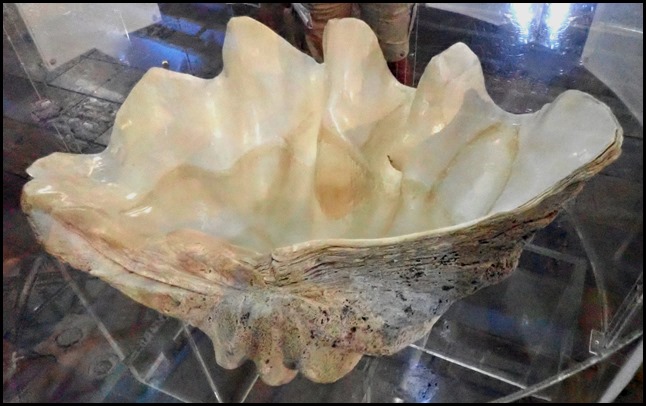 Biology: Giant
clams belong to the phylum mollusca family Tridacnidae and are marine bivalve
invertebrates. Giant clams are the largest of all living bivalve molluscs to
have ever lived, at least according to fossil records. Giant clams grow to
almost 130 cm, and can weigh up to 500 kg. The giant clam on
display measures 106 cm wide by 63 cm tall. Giant clams are hermaphrodites – unable to self-fertilise. Giant
clams may spawn for decades releasing hundreds of millions of eggs on a single
expulsion. Lab studies show that giant clams can grow up to 120 mm per year;
however wild clams which are not optimally fed may grow significantly
slower.
Myths: Known
previously as “man-eater” or “killer” clams historically; however the clams
close slowly instead of ‘snapping shut’ giving divers just enough time to react
and remove their limbs before becoming trapped. Giant clams don’t necessarily
take hundreds of years to reach their massive size, as previously believed.
Records have shown that a clam of 500 kg can obtain its size within 63
years.
Human Use &
Trade: They are consumed as an aphrodisiac. The flesh is enjoyed as a delicacy
and the shells are sold on the black market for ornamental use. Recent studies
conducted by an Italian team found high amino-acids associated with increased
sex drive in humans, and very high levels of zinc, instrumental in the
production of testosterone in men. They are highly prized in the tropical
aquarium market.
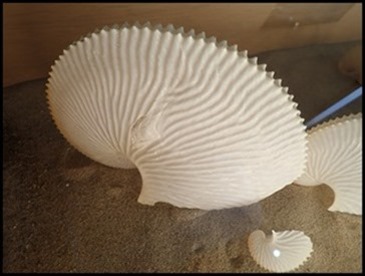 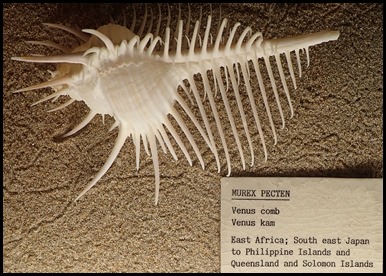 Upstairs a very comprehensive
collection of shells by the hundred. Larry and Marlo’s first trip to these
museums and often we heard the enthusiastic collectors chatting in delight. and
plenty of “Oo Larry” at something new or interesting. Too many to go through I
chose my favourite two, the Argonauta Argo or paper
nautilus and the Venus comb.
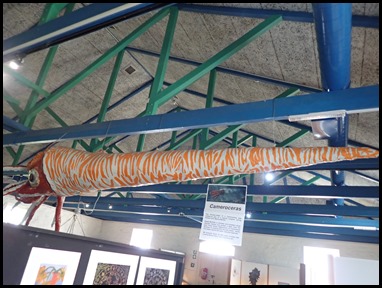 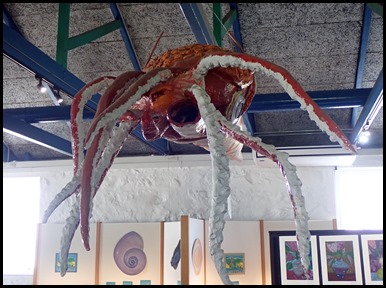 Dangling from the ceiling was a Cameroceras. This life-size model of a Cameroceras was
created as part of a special program during October 2016 (Marine Month). Estelle
McIlrath, a volunteer and excellent visual educator trained and guided a team
from the local Youth Centre (Department of Correctional Services) in creating
this life-size model, mainly from paper mache and other recycled materials. We
thank all who were involved with creating Mossel Bays’ own Cameroceras!
Below this giant were many paintings done by local schoolchildren and some
were truly exceptional. I went back downstairs as Bear told me there was a write
up about krakens, the creature from so many horror films.
 The
Kraken: many-armed sea monsters feature in the ancient literature of
several maritime nations. The most notorious of these creatures is the Kraken of
Scandinavian legend. The Kraken was considered by most scientists to be entirely
fictitious until in 1873 part of a tentacle was presented to the Rev Moses
Harvey of St Johns, Newfoundland, by fishermen whose boat had been attacked and
nearly sunk by a Kraken. Later strandings have provided much information about
this “living legend” now known as the Giant Squid
Architeuthis.
Architeuthids live at great
depths and normally surface only when injured or dying. Consequently little is
known of their habits, However, it is clear that they are frequently eaten by
sperm whales, Physeter catadon, and are occasionally swallowed whole. Whale
fisheries and researchers commonly find giant squid remains in the stomachs of
slaughtered animals and on one occasion a whale harpooned off Madeira vomited a
10,2 metre squid which was still alive. Most sperm whales bear the scars of wounds inflicted by powerful
tooth-edged squid suckers suggesting that Architeuthis is a formidable adversary
when provoked.
Although the largest squid
recorded had a mantle of 3.5 metres giving a probable total length of 18 metres
and a weight of over 1,000 kg, it is thought that larger individuals may exist.
The 9.6 metre long model on display in this museum is based upon a specimen
washed up on Sea Point Beach.
Size of Cephlapods: There
is great size variation between different species of Cephlapods: the cuttlefish
range from a length of 375 mm (Hemisephias typicus) to over 1.5 metres (Seria
latimanus). The smallest octopus speciaes, Octopus arborescens, has a span of
only 50 mm while the largest, Octopus hongkongensis, reaches over 9.5
metres. The greatest size variation from is found among the squids which range
from 20 mm (Sandalops pathopsis) to 18 metres
(Architeuthis).
  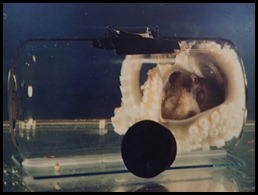 Intelligence: Octopuses and
squids are the most intelligent of all invertebrates. The octopus brain consists
of three lobes, one of which is responsible for learning and memory retention.
These faculties are aided by efficient vision. The eye is similar in structure
and function to that of the humans.
In experiments at Miami
University, “Lee” learned to remove a cork from a jar
to reach inside for a prawn. She later climbed into the bottle for the next
morsel.
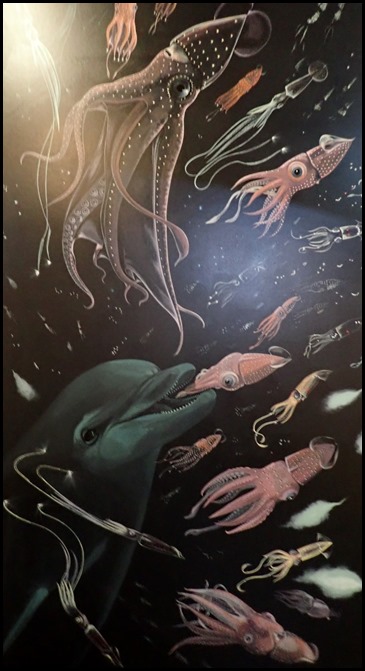 The
Abyss: Beyond the depths where sunlight can penetrate to support algae,
animals are either carnivores or scavengers, feeding on each other or on
detritus sinking from the plankton above. The greater part of the deep ocean bed
appears sparsely populated. Molluscs are mostly represented by burrowing
filter-feeders about which little is known. In volcanic regions the ocean floor,
deep fractures in cooling lava allow seawater to penetrate the earth’s crust.
Minerals from crustal rocks are picked up while sulphate in the water is changed
by heat and pressure into hydrogen sulphide. Flowing back through fissures to
the ocean floor, the water brings sufficient warmth and chemical “food” to
support a rich bacterial growth. This in turn nourishes larger organisms
including limpets, mussels, giant clams and crabs which are preyed upon by
carnivorous fish and octopuses. Thus an energy source other than sunlight
triggers a chain of life in an otherwise hostile environment.
Deep sea squids: Many deep sea
squids possess light organs: these may be simple structures consisting of lens,
light-producing tissue and a reflector. Others, such as Lycoteuthis, are
equipped with diaphragms, focusing mechanisms and colour
filters.
The function of such organs is
not fully understood: perhaps they are useful in keeping schools together in the
deep-sea darkness, perhaps they help to attract prey, or to deter predators, or
to attract mates.
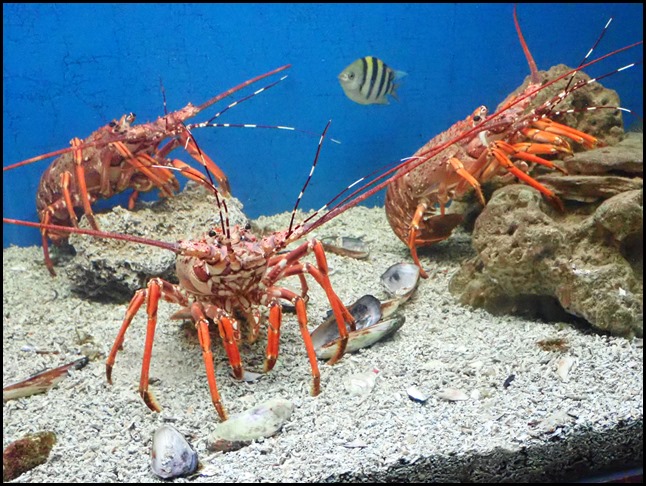 More lobsters for a colourful end to this
really interesting museum and aquaria.
ALL IN ALL A SPLENDID
EXHIBITION
BRILLIANTLY LAID
OUT |